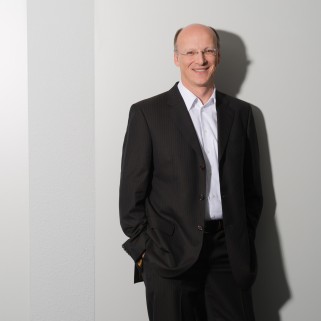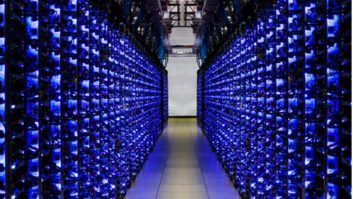
IHSE managing director Enno Littmann outlines the way broadcasters are increasing operational efficiency using KVM matrix switching
KVM matrix switches are becoming an essential element in broadcast facilities. They provide operators and production staff with unlimited and highly flexible access to broadcast devices and tools; delivering ease-of-use, economy of installation and future-proofing the installation.
KVM matrix switches connect user workstations to a bank of computer-based broadcast devices, such as editing tools, servers, audio controllers and playout schedulers. Each system can be individually accessed as though the user were connected locally, even though the device may be situated in an equipment room hundreds of metres (even kilometres) away. The KVM matrix switch is akin to the video router: connecting sources to workstations through a crosspoint matrix with instant switching, free access and adding no inherent delay or corruption.
We call the process: ‘Streamlining the broadcast workflow’. It enables rapid and uninhibited access to broadcast and production devices within the workflow from anywhere in the facility. The connections established by the matrix switch can be managed in a number of ways: in-band CPU selection by keyboard hotkeys, central administrator control via a network using a GUI or through integration with standard broadcast control systems such as VSM and KSC Commander.
Several major broadcast studios, including BT Sport and France Télévisions, have developed new approaches to studio infrastructure and built their new complexes around large KVM matrix switches. Rather than being restricted by a fixed and inflexible layout, users can connect personal workstations to remote broadcast devices as and when needed. In this way, studios and work areas can be dynamically and instantly configured to meet the needs of users. Operators can reach any device without moving and applications can be shared more easily, making more efficient use of user-application licences.
Space and power consumption are limited within OB vans so methods of reducing these are welcome. A technique that is becoming common, and recently adopted by Videohouse, VRT, NEP, Game Creek and others, is to deploy a KVM matrix switch to create universal and flexible operator consoles in place of fixed-purpose workplaces.
This delivers enormous benefits to operators. Individual workstations can be used for any function and easily reassigned, which is attractive to multi-purpose truck operations. The total number of monitors, keyboards and mice and consequent desk ‘clutter’ is reduced, and equipment layout optimised; bringing massive space, weight, heat and power savings.
Post production studios and edit houses, including Sonic Magic studios, Shapeshifter Post and Skywalker, make use of KVM switching to create universal edit suites that can be assigned as required, rather than designated to a particular role. Equipment is easily shared and assets are managed centrally, leading to cost savings and greater efficiencies.
We expect KVM switching to become even more important throughout the industry, driving the requirement for ever-larger KVM matrix switches such as the new Draco tera enterprise 576. Greater emphasis will be placed on access and control of devices within the broadcast workflow. Higher resolution video is also being deployed, requiring high performance 4K/UHD KVM extension solutions with full frame rate and deep colour support; which has led to the new Draco ultra DP KVM extender family.
7.B30







